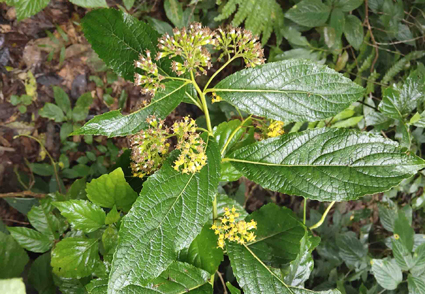Abstract
Our critical examination of ample material including the type specimen and our study of the protologue convinced us that Synotis borii is not different from S. saluenensis and therefore should be synonymized with the latter.
References
- Chen, Y.L. (1999) Synotis (C. B. Clarke) C. Jeffrey & Y.L. Chen. In: Chen, Y.L. (ed.) Flora Reipublicae Popularis Sinicae, vol. 77 (1). Science Press, Beijing, pp. 167−217.
- Chen, Y.L., Nordenstam, B. & Jeffrey, C. (2011) Synotis (C. B. Clarke) C. Jeffrey & Y.L. Chen. In: Wu, Z.Y & Raven, P.H. (eds.) Flora of China, vols. 20–21. Science Press, Beijing & Missouri Botanical Garden Press, St. Louis, pp. 489–505.
- Clarke, C.B. (1876) Compositae Indicae. Thacker, Spink and Co., Calcutta, 347 pp.
- Clarke, C.B. (1890) On the plants of Kohima and Muneypore. Journal of the Linnean Society, Botany 25: 1–107. https://doi.org/10.1111/j.1095-8339.1889.tb00793.x
- Diels, L. (1912) Plantae chinenses Forrestianae. New and imperfectly known species. Notes from the Royal Botanic Garden, Edinburgh 5: 161–304.
- Fan, Y., Zhang, R., Guo, C.L. & Tang, M. (2022) On the identity of Synotis ionodasys (Asteraceae: Senecioneae) from Yunnan, China. Phytotaxa 545 (2): 207–216. https://doi.org/10.11646/phytotaxa.545.2.9
- Hajra, P.K., Rao, R.R., Singh, D.K. & Uniyal, B.P. (1995) Flora of India, vol. 13. Botanical Survey of India, Calcutta, pp. 238–303.
- Jeffrey, C. & Chen, Y.L. (1984) Taxonomic studies on the tribe Senecioneae (Compositae) of Eastern Asia. Kew Bulletin 39 (2): 205–446. https://doi.org/10.2307/4110124
- Li, H.M. & Ren, C. (2018) Proposal to conserve the name Senecio saluenensis (Asteraceae) with a conserved type. Taxon 67 (4): 816–817. https://doi.org/10.12705/674.20
- Mathur, R. (1986) Two new combinations in the genus Synotis (C. B. Clarke) C. Jeffrey & Y. L. Chen (Asteraceae). Journal of Economic and Taxonomic Botany 8 (2): 482.
- Raizada, M.B. (1948) A new Senecio from Assam. Journal of the Indian Botanical Society 27: 206–207.
- Tang, M. (2014) A Systematic Study of the Genus Synotis (Compositae-Senecioneae). Ph.D. thesis. University of Chinese Academy of Sciences, Beijing.
- Tang, M., Ren, C. & Yang, Q.E. (2017) Reinstatement of the Sino-Himalayan species Senecio pentanthus (Asteraceae, Senecioneae). Phytotaxa 292: 253–261. https://doi.org/10.11646/phytotaxa.292.3.5


